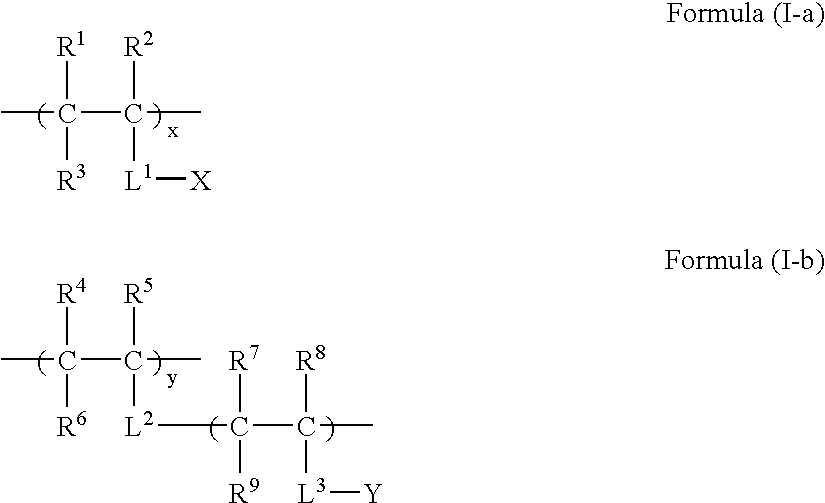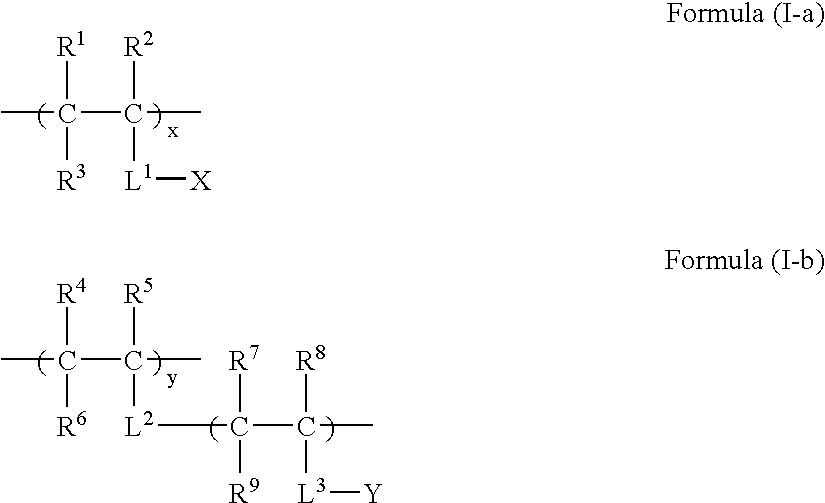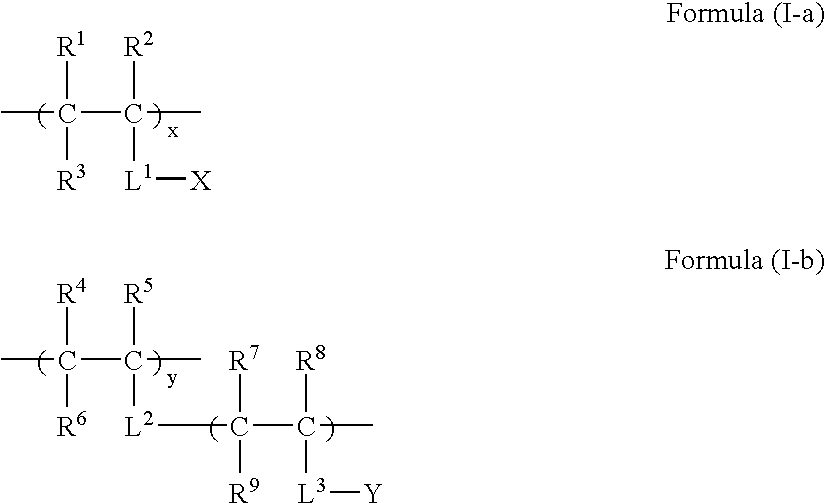Hydrophilic member and process for producing the same
a technology of hydrophilic members and water, applied in the field of hydrophilic members, can solve the problems of reduced function, difficult to remove stain, and hardly seen displayed images, and achieve the effects of high strength, high density, and high strength
- Summary
- Abstract
- Description
- Claims
- Application Information
AI Technical Summary
Benefits of technology
Problems solved by technology
Method used
Image
Examples
example 1
[Hydrophilic Sol-Gel Liquid]
[0173]10 g of the specified hydrophilic polymer (1) as the component (A), 0.1 g of acetylacetone as the non-volatile catalyst (C) and 0.1 g of tetraethyl orthotitanate were mixed in 100 g of purified water, and the mixture was stirred at room temperature for 2 hours to prepare a hydrophilic sol-gel liquid.
[Hydrophilic Composition]
[0174]2.5 g of a 5% by mass aqueous solution of the following anionic surfactant was mixed in the foregoing hydrophilic sol-gel liquid to prepare a hydrophilic composition.
[Sol-Gel Liquid for Undercoat Layer]
[0175]8 g of tetramethoxysilane as the component (B) was mixed in 200 q of ethyl alcohol, 10 g of acetylacetone as the non-volatile catalyst (C), 10 q of tetraethyl orthotitanate and 100 g of purified water, and the mixture was stirred at room temperature for 2 hours to prepare a sol-gel liquid for undercoat layer.
[Composition for Undercoat Layer]
[0176]100 g of a 20% by mass aqueous solution of a colloidal silica dispersion (...
example 2
[0178]A hydrophilic member was prepared in the same manner as in Example 1, except for changing the coating method to a method as described below.
[0179]A float sheet glass (thickness: 2 mm) which is the most general transparent sheet glass was prepared; a surface of the sheet glass was hydrophilized by a UV / O3 treatment for 10 minutes; and the composition for undercoat layer of Example 1 was spin coated and dried in an oven at 100° C. for 10 minutes to form an undercoat layer at a dry coverage of 0.1 g / m2. After sufficiently cooling at room temperature, the hydrophilic composition of Example 1 was bar coated on the undercoat layer and dried in an oven at 150° C. for 30 minutes to form a hydrophilic layer at a dry coverage of 3.0 g / m2.
example 3
[0180]A hydrophilic member was prepared in the same manner as in Example 2, except for eliminating the non-volatile catalyst (C) of the composition for undercoat layer in Example 2.
PUM
| Property | Measurement | Unit |
|---|---|---|
| particle size | aaaaa | aaaaa |
| particle size | aaaaa | aaaaa |
| boiling point | aaaaa | aaaaa |
Abstract
Description
Claims
Application Information
 Login to View More
Login to View More - R&D
- Intellectual Property
- Life Sciences
- Materials
- Tech Scout
- Unparalleled Data Quality
- Higher Quality Content
- 60% Fewer Hallucinations
Browse by: Latest US Patents, China's latest patents, Technical Efficacy Thesaurus, Application Domain, Technology Topic, Popular Technical Reports.
© 2025 PatSnap. All rights reserved.Legal|Privacy policy|Modern Slavery Act Transparency Statement|Sitemap|About US| Contact US: help@patsnap.com



